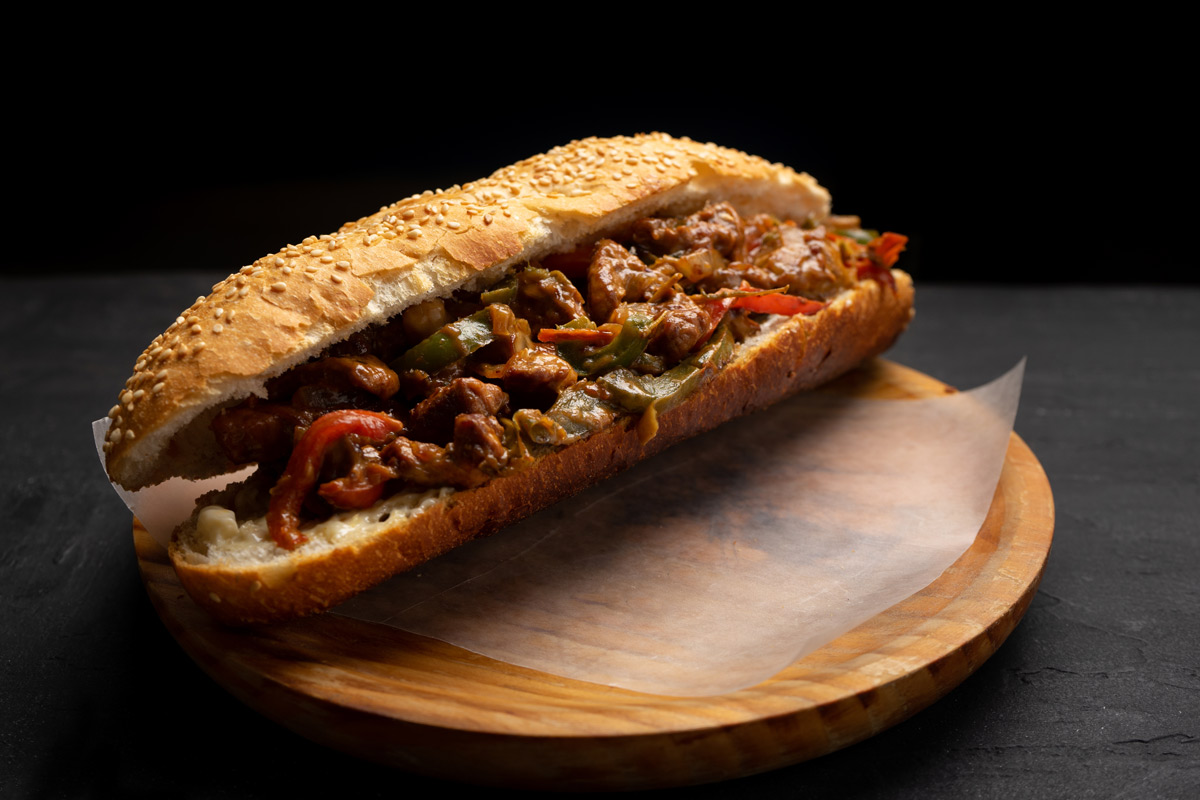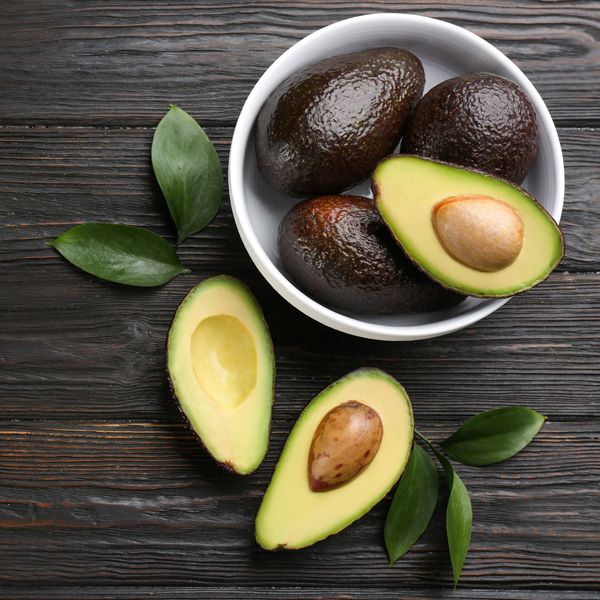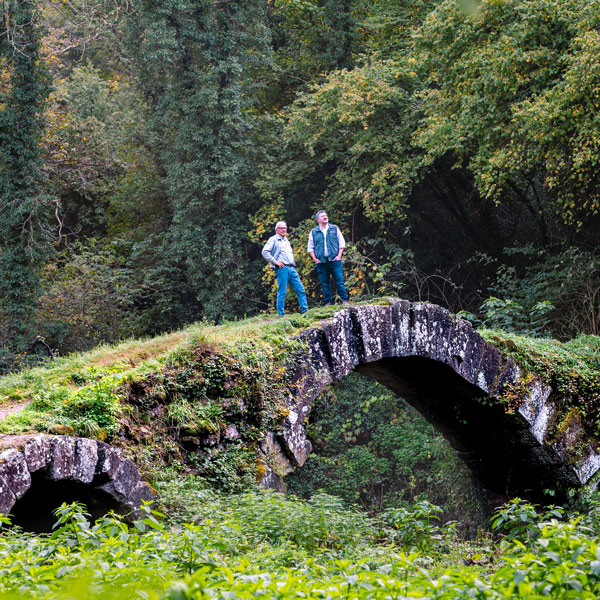Philly-Style Cheesesteak Recipe, Spotlight on Flank Steak, How to Halve Avocados, New Lenses for Better Vision and Benefits of Walking in Nature
I love to “healthify” recipes that are delicious but could use a refresh, one that preserves their taste and lowers the guilt quotient over eating them. Philly cheesesteak is a great example—and this recipe comes together very quickly. I’m also sharing news about a potential revolution in corrective lenses that could have you seeing more clearly in the future, along with the latest study about the advantages of walking in nature—and why it’s better than a track or treadmill.
Philly-Style Cheesesteak
 Philly-Style Cheesesteaks
Philly-Style CheesesteaksWhile delicious and beloved, the classic sandwich is somewhat of a greasy hot mess. With just a few tweaks, including a leaner cut of meat than usual and polyphenol-rich olive oil, it becomes a satisfying meal with a better health profile. If you prefer, swap mozzarella for the provolone.
Ingredients
- 1-1/2 pounds flank steak
- 4 tablespoons extra virgin olive oil, divided use
- 1 teaspoon coarse sea salt
- 1 teaspoon freshly ground black pepper
- 2 thin baguettes or 4 seeded rolls, whole grain if possible
- Dijon mustard
- 8 slices provolone cheese
- 1 large yellow onion, sliced thinly
- 1 large green or red bell pepper, cored and thinly sliced
Directions
Step 1
Prep the flank steak: To make the meat easier to thinly slice, place it in the freezer for 45-60 minutes to firm it up and get it frosty, but not to the point it’s frozen. For already frozen meat that you’re defrosting, slice before it thaws out completely. While you’re waiting, set out a platter and grab your raw meat-only cutting board and a sharp chef’s knife. (As an alternative, you can use the thin-slice blade of your food processor and work with chunks that will fit into the spout.) When the meat is ready, slice it against the grain—in the opposite direction of the meat fibers. Toss in a bowl with 1 tablespoon olive oil, salt, and pepper, and set aside.
Step 2
Cut each baguette in half and then slice each bread section about three-quarters of the way through. For each sandwich, spread mustard on one side of the bread and layer on the provolone.
Step 3
Heat a large frying pan over medium-high heat. When hot, add 2 tablespoons olive oil and the onion and bell pepper slices; lower the heat and slow-cook until the onions are fully caramelized. Use a large slotted spoon to move the veggies to a bowl.
Step 4
Raise the heat back to medium-high and then add the rest of the olive oil. Add the meat (work in batches if needed to avoid crowding). Sear the meat, then use tongs to flip each piece and continue to sauté until well cooked with the edges slightly crispy.
Step 5
To finish assembling the sandwiches, place equal amounts of the hot meat over the cheese—the heat will melt it. Top each with a generous amount of onions and peppers and a drizzle of olive oil.
Yields 4 servings

Healthy Ingredient Spotlight
Flank Steak
Spoiler alert: Flank steak is not actually a steak, yet it’s still a flavorful cut of beef and quite affordable. Because it’s lean, it can be tough if not properly cooked. If you have a flank steak recipe, such as London broil, that calls for cooking an entire piece (rather than precutting it into thin slices), three things make all the difference: a long (overnight) marination, a fast grilling (or a very slow braise for a dish like brisket, which will also tenderize it), and slicing it against the grain—in the opposite direction of its meat fibers.

Quick Kitchen Nugget
Timely Warning: What Not to do to Avocado Halves

A couple of years ago, a so-called hack for keeping an avocado half from oxidation by storing it in a container of water exploded on social media sites. Problem is, storing any fruit in water creates a breeding ground for pathogens like listeria or salmonella on the peel to multiply, putting you at risk for a food-borne illness. Back then, the FDA issued a stern warning not to follow this tip and enthusiasm for the hack died down. But recently these videos have resurfaced, prompting this reminder.
The safest way to store a leftover avocado half is to give it a generous squeeze of lemon or lime juice and press a small piece of food wrap over it, especially over the exposed flesh, then store it in the fridge. Also, remember to rinse whole avos under cold running water before using, just as you would with any fruit (or vegetable).

For Your Best Health
New Lenses for Better Vision
Do you ever feel as though your progressives aren’t giving you the visual range you need? A better lens may be at hand. Researchers have developed a spiral-shaped lens that maintains clear focus at different distances in varying light conditions. It works much like progressive lenses used for vision correction but without the distortions typically seen with those lenses. It could help advance contact lens technologies, intraocular implants for cataracts, and miniaturized imaging systems.
“Unlike existing multifocal lenses, our lens performs well under a wide range of light conditions and maintains multifocality regardless of the size of the pupil,” said Bertrand Simon, PhD, from Photonics, Numerical and Nanosciences Laboratory, a joint research unit of the Institut d’Optique Graduate School, the University of Bordeaux, and the National Centre for Scientific Research in France. “For potential implant users or people with age-related farsightedness, it could provide consistently clear vision, potentially revolutionizing ophthalmology.”
In Optica, Optica Publishing Group’s journal for high-impact research, the researchers describe the new lens, which they call the spiral diopter. Its spiraling features are arranged in a way that creates many separate points of focus, much like having multiple lenses in one. This makes it possible to see clearly at various distances.
The inspiration for the spiral lens design came when the paper’s first author, Laurent Galinier from SPIRAL SAS in France, was analyzing the optical properties of severe corneal deformations in patients. This led him to conceptualize a lens with a unique spiral design that causes light to spin like water going down a drain. This phenomenon, known as an optical vortex, creates multiple clear focus points, which allow the lens to provide clear focus at different distances.
“Creating an optical vortex usually requires multiple optical components,” said Galinier. “Our lens, however, incorporates the elements necessary to make an optical vortex directly in its surface. Creating optical vortices is a thriving field of research, but our method simplifies the process, marking a significant advancement in the field of optics.” Volunteers using the lenses reported noticeable improvements in visual acuity at a variety of distances and lighting conditions.
The researchers are now working to better understand the unique optical vortices produced by their lens. They also plan to perform systematic trials of the lens’ ability to correct vision in people to comprehensively establish its performance and advantages in real-world conditions. In addition, they are exploring the possibility of applying the concept to prescription eyeglasses, which could potentially offer users clear vision across multiple distances.
“This new lens could significantly improve people’s depth of vision under changing lighting conditions,” said Dr. Simon. “Future developments with this technology might also lead to advancements in compact imaging technologies, wearable devices and remote sensing systems for drones or self-driving cars, which could make them more reliable and efficient.”

Fitness Flash
The Multiple Benefits of Walking in Nature
New work from University of Utah psychology researchers is helping prove what American authors John Muir and Henry David Thoreau said more than 150 years ago: Time spent in nature is good for the heart and soul. Amy McDonnell, PhD, and David Strayer, PhD, are showing it’s good for your brain, too. Their study, published in the journal Scientific Reports, used electroencephalography (EEG), which records electrical activity in the brain with small discs attached to the scalp, to measure participants’ attentional capacity. They found that a walk in nature enhances certain executive control processes in the brain above and beyond the accepted benefits associated with exercise. The University itself has recently established a new research group, Nature and Human Health Utah, to explore these issues and propose solutions for bridging the human-nature divide.
Many researchers suspect that a primal need for nature is baked into our DNA, and diminishing access to nature puts good health at risk. “There’s an idea called biophilia that basically says that our evolution over hundreds of thousands of years has gotten us to have more of a connection or a love of natural living things,” said Dr. Strayer, a professor of psychology. “And our modern urban environment has become this dense urban jungle with cell phones and cars and computers and traffic, just the opposite of that kind of restorative environment.” Dr. Strayer’s past research into multitasking and distracted driving associated with cellphone use has drawn national attention. For the past decade, his lab has focused on how nature affects cognition.
For this study, the researchers analyzed EEG data recorded on each of 92 participants immediately before and after they undertook a 40-minute walk. They started out by having participants do a complex cognitive task—counting backwards from 1,000 by sevens. “No matter how good you are at mental math, it gets pretty draining after 10 minutes,” Dr. McDonnell said. Right after that, they were given an attention task. The idea was to deplete the participants’ attentional reserves before doing the task and going for the walk, which they did without any electronic devices or talking to anyone along the way. Participants were randomly selected to walk through either the least built-up part of the Red Butte Garden, an arboretum in the foothills just east of the University, or the adjacent medical campus and parking lots. Both routes covered two miles at similar elevations.

“The participants that had walked in nature showed an improvement in their executive attention on that task, whereas the urban walkers did not, so then we know it’s something unique about the environment that you’re walking in,” Dr. McDonnell said. “We know exercise benefits executive attention as well, so we wanted to make sure both groups have comparable amounts of exercise.”
What sets this study apart from much of the existing research is its reliance on EEG data as opposed to surveys and self-reporting, which do yield helpful information but can be highly subjective. “This is probably one of the most rigorous studies in terms of controlling for and making sure that it’s really the exposure in Red Butte” resulting in the observed cognitive effects, Dr. Strayer said.
The EEG data revealed three components of attention: alerting, orienting, and executive control. Executive control occurs in the brain’s prefrontal cortex, an area critical for working memory, decision-making, problem-solving, and coordinating disparate tasks. “The kinds of things that we do on an everyday basis tend to heavily use those executive attentional networks,” Dr. Strayer said. “It’s important in concentration, so it’s an essential component of higher-order thinking.”
While the EEG and attention task results did not show much of a difference for alertness and orientation between the garden and the asphalt walkers, those on the nature walk exhibited improved executive control. Drs. McDonnell and Strayer hope the findings can be refined to show what kind of natural settings result in optimal cognitive benefits and how much exposure is needed to help.
Dr. Strayer studies both distraction and attention, which he sees as opposing sides of the same coin. “It’s where the prefrontal cortex is overloaded, overstimulated, and you make all kinds of dangerous mistakes when you’re multitasking behind the wheel,” he said. “But the antidote to that is being out in a natural environment—leave the phone in your pocket and go out and walk the trails. The parts of the brain that have been overused during the daily commute are restored. You see and think more clearly.”
Get More Recipes In Your Inbox!